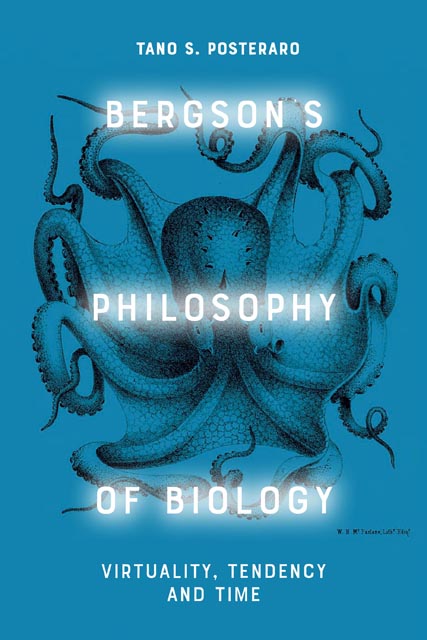Book contents
- Frontmatter
- Contents
- Acknowledgements
- Abbreviations
- Introduction: Between Philosophy and Biology
- 1 The Actual: Mechanism, Finalism, Modality
- 2 The Virtual: Instantiation, Implication, Dynamics
- 3 A Discourse on Tendency
- 4 Individuality and Organisation
- 5 Finalism Inverted
- 6 Canalisation and Convergence
- Concluding Remarks and Future Directions
- Notes
- Bibliography
- Index
6 - Canalisation and Convergence
Published online by Cambridge University Press: 25 October 2023
- Frontmatter
- Contents
- Acknowledgements
- Abbreviations
- Introduction: Between Philosophy and Biology
- 1 The Actual: Mechanism, Finalism, Modality
- 2 The Virtual: Instantiation, Implication, Dynamics
- 3 A Discourse on Tendency
- 4 Individuality and Organisation
- 5 Finalism Inverted
- 6 Canalisation and Convergence
- Concluding Remarks and Future Directions
- Notes
- Bibliography
- Index
Summary
Convergent evolution is not an accident or anomaly of an otherwise random variational process. What it reveals is the deep unity that underlies the contingent plurality of life forms, and a kind of pattern, or orthogenetic trend, to their repeated convergence on the same organs and traits. Convergence is best explained in terms of the canalisation of organs by their functions. Canalisation is an image for how one indivisible movement – the tendency towards the realisation of a function – manifests itself in a series of organic structures. Evolution converges on the eye across a series of lineages because each lineage canalises the same tendency towards vision.
Introduction
This chapter concludes the book by situating two of Creative Evolution’s most important topics – canalisation and convergence – within Bergson’s psychological interpretation of orthogenesis. I show that organic forms are best understood as ‘canalising’ virtual tendencies through a diversity of material structures. This account is left undeveloped in Bergson’s images of the canal and the hand thrust through iron filings. I reconstruct his position on convergence, or the appearance of like forms across divergent lineages, on the basis of those images. Convergence testifies to the virtual unity of life by revealing what is common beneath the proliferation of diverse forms. What is common is a shared starting point as well as the unified directionality of virtual tendencies. As the same tendencies develop through divergent channels, they tend to materialise like forms as solutions to like problems. The camera eye is the most famous example. Its centrality to Bergson's account should be read in terms of the relation between vision and indetermination. The idea that there is a tendency towards the development of vision realised across a number of distinct lineages does not require the postulation of an end that would pre-exist its material instantiations. The idea of open-ended directionality is key to the orthogenetic conception of life as an evolutionary movement trended by virtual tendencies and channelled through processes of speciation.
Canalisation
In Chapter 4, I introduced the distinction between process and product in the context of Bergson's contrast between the organisational simplicity and structural complexity of the camera-like eye. The process/ product distinction can be transposed onto the evolutionary register.
- Type
- Chapter
- Information
- Bergson's Philosophy of BiologyVirtuality, Tendency and Time, pp. 209 - 252Publisher: Edinburgh University PressPrint publication year: 2022



